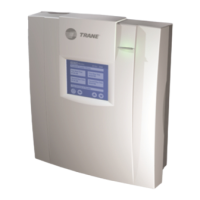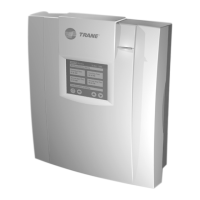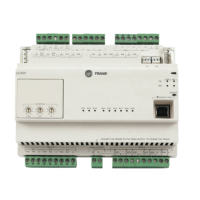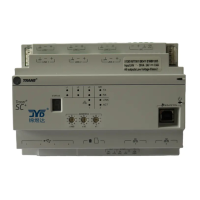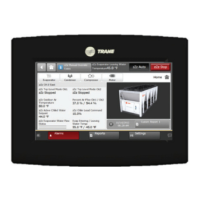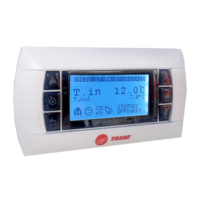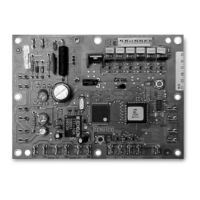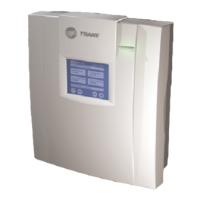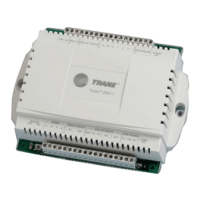Table 22. Analog output (0–10 Vdc) troubleshooting of configuration and operation
Step Number Action
Probable Cause of
Problem
Step 1
Connect the Rover service tool to the LonTalk communication link, start th
e Rover service tool,
and select the MP501 you are troubleshooting from the Active Group Tree. The device plug-in
for the selected MP501 will appear with the Status screen displayed in the workspace.
Refer to the Rover Se
rvice Software Installation, Operation, and Programming Guide (EMTX-
SVX01).
—
Step 2
Select the Configuration button to display the Device Configuration screen, then select the I/
O ta
b. V eri fy an al og ou tp ut is se lected. If it is, verify the actuator scaling is correct. For example,
0–100% is scaled to 2–10 Vdc.
See Table 20, p. 49 for the scaling for typical analog output applications.
Analog output
conf
iguration problem.
Step 3
At the Device Configuration screen, select the PID tab and ver
ify the maximum output is not
0%. If the minimum and maximum are set to 0%, the output will not change.
Verify that the gains are not 0. If all three gains are 0, the PID output will always be 0%.
PID loop configuration
problem.
Ste
p 4
From the Device Configuration screen, select the Close button to display the Status screen in
th
e workspac
e. Look on the Unit tab. Is the MP501 in unoccupied mode if configured as SCC?
If configured as generic, the MP501 may be disabled.
If the mode is unoccupied (SCC) or disabled (generic), the controller will command the analog
output to its dis
abled position, typically 0%. The disabled position is set on the PID tab in the
Device Configuration screen.
If the controller is unoccupied but you think it should be in a diffe
rent state, see “Occupancy
Arbitration (Only SCC Mode),” p. 52.
The MP501 is in
unoccupied mode (for
SCC applications) or
disabled mode
(for generic
applications).
Step 5
At the Unit tab in the Status workspace, check diagnostics.
In SCC mode, if you’re not using the network space temperature input and the hardwired space
temperature input fails, the anal
og output goes to its fail-safe position.
Similarly, in generic mode, if you’re not using the network input and th
e hardwired input
(temperature, flow, pressure, percent, ppm) fails, the analog output goes to its fail-safe
position. The fail-safe position is set on the PID tab in the Device Configuration screen. The
controller will return to normal operation when the sensor is no longer failed.
Sensor failure
diag
nostic.
Step 6
Compare the input to the setpoint.
In SCC mode the controller may be calculating that no heating or
cooling capacity is required
at this time, so it is normal for the analog output to be at 0 Vdc.
Similarly, in generic mode, the input may be close enough
to setpoint that the analog output
should be at 0 Vdc.
Capacity not required.
Step 7
Check to see if either of the network variables nviCmdOverrid
e or nviEmergOverride is keeping
the analog output at 0%. These variables can override the output.
To view nviCmdOverride and nviEmergOverride, refer to the Rover Service So
ftware
Installation, Operation, and Programming Guide (EMTX-SVX01).
AO overridden.
50 CNT-SVX08F-EN
Troubleshooting
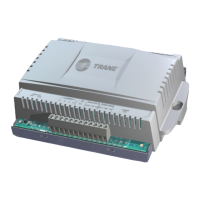
